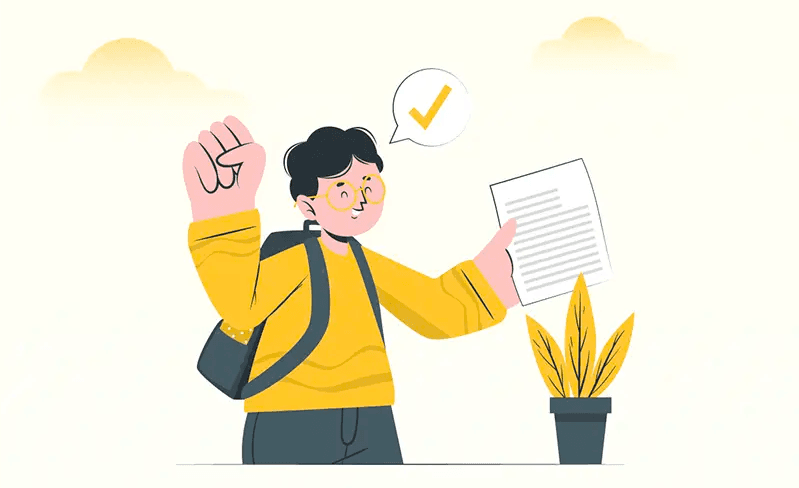Explore Courses
Top University

Jagpreet
05 September, 2024
Table of Contents
“Inclusion is not a matter of political correctness. It is the key to growth.” –Jesse Jackson (Activist)
Norway, a place considered one of the best to see the Northern Lights, offers a lifetime experience that you should have at least once. You can also see polar bears there; they are usually not seen in the streets of Oslo, but heading to far-flung Svalbard can be a different story. The list can continue endlessly if we count more amazing things, but Norway is also known for its excellent educational policies that promote equity and inclusion. As per ResearchGate , In Norway, nearly 100% of students are enrolled in public schools, ensuring equal access to education for everyone. The curriculum is standardised across the country, creating a uniform learning experience. Notably, grades are not introduced until grade eight (around age 13), which helps prevent early academic pressure and promotes a more inclusive environment. Additionally, Norway only began grouping students by ability or marks in 2003, and this practice is relatively new.
Specialisation in subjects only occurs during the last two years of upper secondary school (ages 18-19), allowing all students to receive a broad education before focusing on specific areas.
These policies collectively support equity and inclusion by providing consistent and accessible education for all students. In this blog, we will explore how Norway’s education policies are promoting equity and inclusion.
Norway places huge importance on early childhood education. Their kindergartens are high-quality and available to all children, regardless of their family’s income. This early start gives every child a solid base for their learning journey.
A study by Boston College has shown that Norway’s universal early childhood education programme, available to all children from age one, benefits more than just infants. It helps reduce the gap between rich and poor.
The study, conducted on 62,000 children in Norway, discovered that effective early years care enhances children’s language development across income levels. Specifically:
The research revealed that low-income customers’ children, who took part in the programmes, experienced improvements to their language development.
By age three, the language gap between low-income and high-income children had notably decreased.
The biggest improvements were seen in low-income areas with higher attendance at early childhood centres.
This study highlights how early education can create more equal opportunities for all children.
Norway is leading the way in creating inclusive classrooms. Schools are designed to welcome students with different abilities, backgrounds, and learning styles. Teachers are trained to support every child’s needs, and there’s a strong focus on creating a positive and accepting learning environment.
To make inclusion work effectively in schools, it is important for everyone involved to have a shared understanding of what inclusion means. Different experts have various explanations for inclusion. Generally, inclusion involves providing high-quality instruction and support to all students within regular classrooms, helping them succeed in the core curriculum.
In Norway, inclusion often means integrating students with special educational needs into local schools and regular classrooms. Some definitions also focus on values like belonging, equal participation, and shared responsibilities.
Implementing these inclusive ideals is vital for human rights, equality, and social justice. However, challenges can arise, such as ensuring teachers have the right skills, fostering collaboration, and effectively combining special and regular education. – source
Norway understands that a child’s well-being is just as important as their academic success. Schools prioritise physical activity, healthy eating, and emotional support. This holistic approach helps students to thrive both inside and outside the classroom.
On November 30, 2022, Norway and UNESCO renewed their commitment to promoting education for health and well-being. They signed an Addendum to their existing agreement, which includes an additional financial contribution of 20 million NOK (about US$ 2 million) for 2022-2023. This support will enhance UNESCO’s global efforts to improve education related to health and well-being.
Norway invests heavily in teacher training. Teachers are highly qualified professionals who are equipped to handle the challenges of modern education. This means that students get the best possible teaching and support.
The policy of teacher education in Norway has attracted concern, particularly after the onset of the first PISA results in the year 2000. These results known as the shock or The PISA shock in Norway, indicated that the Norwegian students had performed dismally against their counterparts in other countries in the OECD nations. Performance problems were again underlined in the second round of PISA results.
One major issue identified was the weak teacher education system. Critics pointed out several challenges:
Generalist Teaching Approach: Norwegian teacher preparation was based on a generalist model, where teachers were trained to teach all subjects at all grade levels. This system, known as allmenlærer or “teacher of all,” was seen as a problem.
Varied Quality of Training: The quality and size of teacher preparation programmes varied greatly across the country, leading to inconsistencies in teacher training.
These factors contributed to the concerns about the effectiveness of Norwegian education and the need for improvements in teacher training.
Students of Norway are not passive but rather have some input into what is taught to them. It supports student’s involvement in decision-making processes; Young people are made to feel that they own the school systems.
Norway established its first children’s Ombudsman in 1981, becoming a pioneer in protecting children’s rights. Since then, many OECD countries have set up similar roles.
In Europe, the European Network of Ombudspersons for Children (ENOC) was created in 1997 to promote and protect children’s rights.
At present, virtually all the member countries of the OECD have a separate official or institution to deal with issues concerning children and youth having a separate ombudsperson for children or a general ombudsperson with the intention of dealing with such issues.
Education for Norwegians is not a process that stops when one gets out of school it is seen more as a process that continues throughout one’s lifetime.It also provides great opportunities for advancing the adult degree and the development of different skills.
Consequently, continuing education and training for a lifetime are the key ideas of Norwegian education policy based on the European Commission, the OECD, and other supranational structures. It also seeks to offer the Norwegian citizens knowledge and skills invariance or a constant improvement of the knowledge and skills that they possess.
This approach improves people’s well-being, increases productivity, and preparedness in the labour market, as well as fosters economic development and employment adaptability.
Some of the factors affecting Norway include; competition, the environment and welfare. To address these, the country requires the availability of skilled workers. Education for becoming a constant learner, as formal, non-formal, and informal education, is essential to meet the market demands and social transformation.
This continuing education assists Norwegians in maintaining their competitiveness and fulfilling the requirement of a constantly changing economy in the demand for workers.
The learning system in Norway is one of the best examples to show the world that how a society could be made a bit fairer. In this regard, it can be mentioned that, through the focus on equality, inclusion and well-being, Norway is thus creating a solid base for a better future for all the people of the country.
Their commitment to free education, early childhood development, inclusive classrooms, and teacher training is paying off. Norway has one of the highest literacy rates and education levels in the world.
As the world faces increasing challenges, Norway’s approach to education offers valuable lessons for other countries. By investing in education and creating equal opportunities, we can build a better future for everyone.
In Norway, inclusive education means that schools adapt their teaching to meet the needs of every student. Each student gets the chance to learn in a way that suits their strengths and abilities. The country invests a lot in special educational support to ensure that all students receive the help they need to succeed.
Equity and inclusion in education make sure that all students have the same chance to learn and access resources, no matter their background or abilities. “Equity” means giving each student the specific support they need to succeed, while “inclusion” means creating a welcoming environment where everyone feels valued. Unlike “equality,” which treats everyone the same, equity focuses on addressing individual needs to ensure fairness.
Norway’s educational strategy aims to ensure that every student learns in a positive and inclusive environment. Key goals include:
Inclusive Learning: Making sure all students are part of a supportive and effective learning environment.
Early Support: Providing special assistance to children and youth who need it early on to help them reach their full potential.
Our team of experts, or experienced individuals, will answer it over online meet. Book your slot now!
Book Free Online CounsellingGet Free Career Guidance
